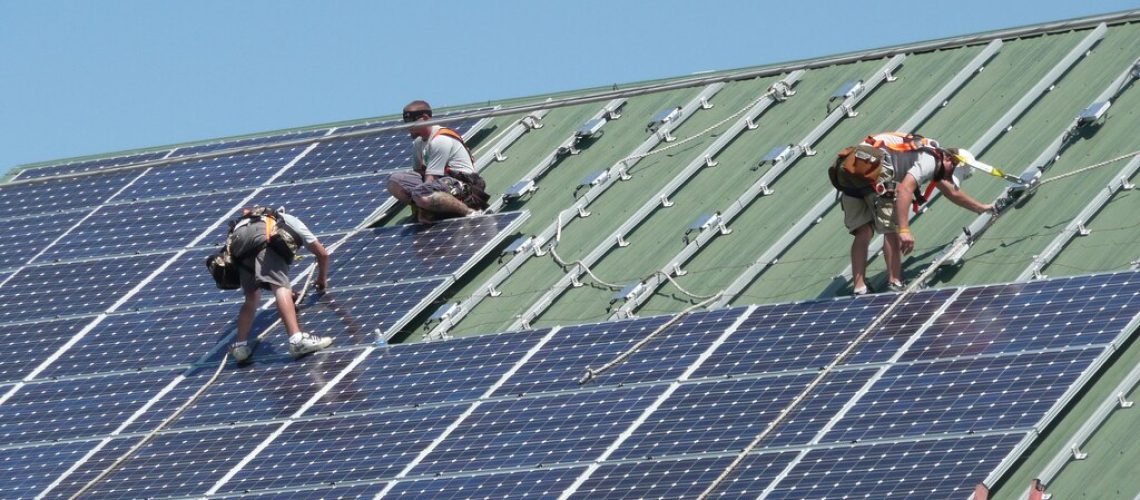When Cuyahoga County, Ohio wanted to accelerate solar energy use, they didn’t wait for the state or federal government to act. Instead, the county undertook a series of actions at the local level to expand the deployment of solar and storage while saving millions in energy costs. The county installed solar panels on four government buildings; partnered with a municipality to purchase energy produced from a solar installation at a local landfill; and launched a co-op that has helped more than 250 residents install solar on their homes.
This is just one example of how hundreds of local governments are taking action to help their communities benefit from solar energy—regardless of what’s happening at the state or federal level. Solar companies can take advantage of these opportunities through local engagement and partnership that will provide mutual benefit.
How local governments set the stage
While local jurisdictions often receive attention when they block or delay solar energy projects, it is also valuable to recognize their constructive (and crucial) role in setting the framework for solar market growth.
Local governments establish rules and procedures that influence the speed and cost of solar installations. This includes the process for obtaining building permits, which can determine if a rooftop solar project is approved quickly or faces costly delays. Planning and zoning procedures also help clarify whether solar projects can go up in most parts of the community without unnecessary restrictions.
Additionally, the development of comprehensive plans at the local level for land use, energy, and transportation sets goals and priorities for clean energy use, including rooftop, utility-scale, and community solar. Depending on the location, these activities can be handled by the municipality, county, and/or a coordinating body such as a regional planning organization.
Despite their central role in the process, local jurisdictions are often keen for more knowledge or experience to make their communities more solar friendly. They also may lack the resources or staff to focus their attention on solar energy amid competing priorities.
Federal initiatives that help
At my organization, the Interstate Renewable Energy Council (IREC), we lead a program called SolSmart with the International City/County Management Association (ICMA). SolSmart provides technical assistance at no cost to help local governments and regional organizations meet national best practices to encourage solar energy use.
To date, more than 500 jurisdictions in 43 states, Puerto Rico, the District of Columbia, and the U.S. Virgin Islands have achieved designation under the SolSmart program. For the solar industry, a SolSmart designation is a sign that these communities are “open for solar business.” Local governments are invited to join us by filling out a short contact form on our website.
We also encourage jurisdictions to adopt SolarAPP+, a free online platform for automated permit processing launched by the National Renewable Energy (NREL) and a network of industry partners. SolarAPP+ allows communities to provide instant approval for most rooftop solar projects, greatly reducing the time and expense required to obtain permits. To date, over 110 jurisdictions have adopted or piloted SolarAPP+, and it has been used by over 600 contractors to approve about 27,000 permits.
The passage of the Inflation Reduction Act has opened a host of new financial incentives and grant opportunities that will encourage local clean energy growth. Programs like SolSmart and SolarAPP+ will help jurisdictions streamline their processes to manage a growing number of requests for solar permits.
Partnering with communities
For solar companies, building a partnership with local governments begins with recognizing shared goals. Both a developer and a local jurisdiction have an interest in maintaining sound structures and engineering, and in ensuring that an installation meets codes and standards. Both parties hope to rely on a fast and easy approval process that avoids red tape and saves financial resources and staff time.
There’s no shortage of examples of how engaged leadership at the local level can help solar companies succeed. For instance, Orange County, Florida teams up with Solar United Neighbors of Florida every year to offer a group purchase program that has led to nearly 5 MW in installations. The county also reduced its solar permitting process to one day, provided specialized training to plan reviewers and inspectors, and installed solar on county buildings.
In Washington State, Thurston County joined the cities of Olympia, Tumwater, and Lacey to publish a Climate Mitigation Plan that set goals for reducing emissions. Michigan City, Indiana worked with the local NAACP to adopt the Soul Power program to train local residents for solar jobs, focusing on people of color and low-income communities. The town of Milton, Massachusetts is exploring a solar microgrid to power the town hall, police department, and an affordable housing complex, providing backup power in case of grid failure.
The solar industry has much to gain by developing constructive partnerships with local governments to help communities achieve sustainability, resilience, and equity goals. In turn, solar companies benefit from increased local knowledge, new installations, and an expanded customer base. Local government should be viewed not as a hurdle, but rather an indispensable partner in the clean energy transition.
Theresa Perry is the program director for the SolSmart program at IREC, which helps local governments encourage the use of solar and storage. Previously, she focused on corporate energy management and sustainability programming for companies including Cisco and Advance Auto Parts. Her energy supply side management experience includes purchasing renewable energy around the globe and developing solar projects as large as 20 MW. More information on SolSmart can be found at SolSmart.org.



